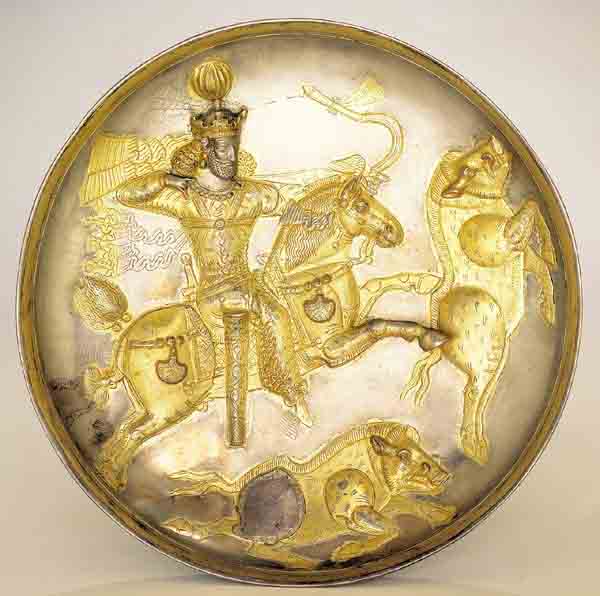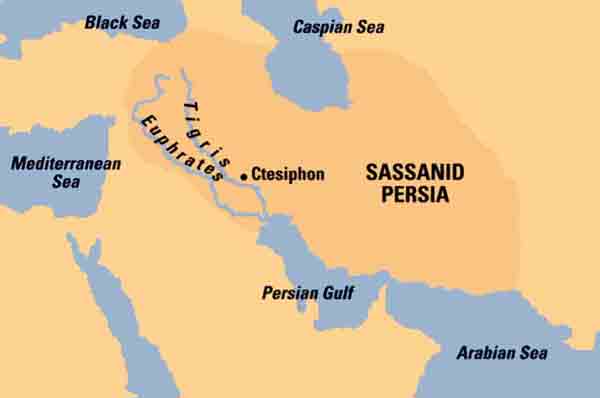
A Persian king, in full regalia, slays wild boars on this fourth century A.D. silver gilt plate from Iran.
When the armies of the Sassanid dynasty defeated those of Parthia in 224 A.D., their empire, with its capital at Ctesiphon (on the Tigris River, in what is now Iraq), entered a 400-year-long period of prosperity and expansion. At its height, Sassanian Persia encompassed the territories of modern-day Iran, Iraq, Armenia, Azerbaijan and Turkmenistan, parts of Turkey and the Arabian peninsula and parts of what are now Pakistan and Afghanistan. Since their territory encompassed major trade routes, such as the Silk Road linking the West with the riches of the Orient, Sassanian society—at least, its upper classes—enjoyed tremendous wealth.

Nobles lavished their wealth on sumptuous decorative objects. Craftsmen fashioned ornate works from precious metals, gems and glass; and often, as in this plate, gold reliefs were fastened onto silver objects to create a raised, three-dimensional effect. Craftsmen had to exalt the king’s authority and prowess in their works, and they produced many vessels depicting the monarch engaged in mortal battle against wild beasts.
The Zoroastrian Sassanids were in frequent conflict with their neighbors, including pagan Rome and, later, Christian Byzantium to the west. Weakened by constant warfare on various fronts, Sassanian Persia finally fell to Islamic Arab invaders in 642 A.D.
Already a library member? Log in here.
Institution user? Log in with your IP address.

